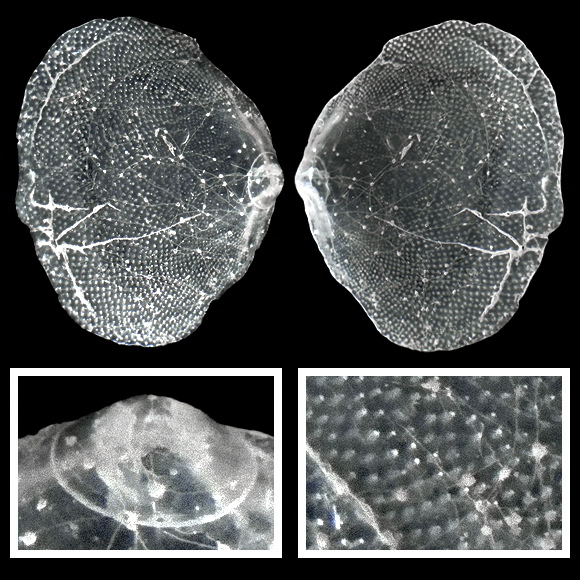
Norway to Mediterranean. Commensal with some burrowing mud shrimps: Upogebia deltaura (Leach, 1816) and Upogebia stellata (Montagu, 1808), which nest inside soft sediments from the low intertidal down to the continental shelf. It seems that the animal can attach istelf to the ventral side of its host by some byssal threads (MBSBI). Original taxon: Solen squamosus. Synonym: punctura.
Young specimen found beachstormed in the cove north of the harbour entrance, Port-la-Nouvelle, Occitania, S. France. 2,1mm. Original pictures provided by S. Clanzig (FR).
– (CC BY-NC-SA) –
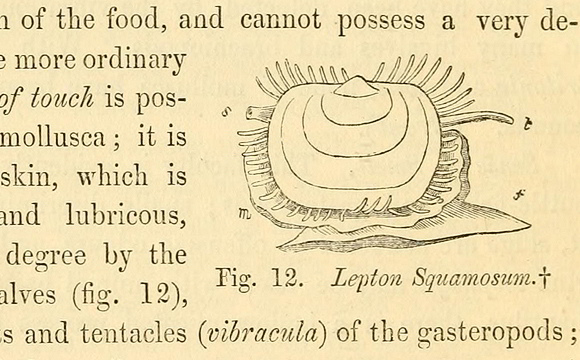
« Shell roundish-oval, with a tendency to a square outline in consequence of the front margin being nearly straight and of the hinge-line being unusually broad; it is very much compressed and almost flat, thin, semitransparent and glossy. Sculpture: numerous and minute circular pit-marks […]; there are also distinct lines of growth, which vary in their distance from each other. Colour snow-white. Epidermis exceedingly thin, and only shown by an iridescent hue in young specimens. Margins obliquely truncate on both sides, with the angles rounded, somewhat incurved in front, and slightly curved outwards at the back. » – J. G. Jeffreys: British conchology vol. II, London 1863, p.214.
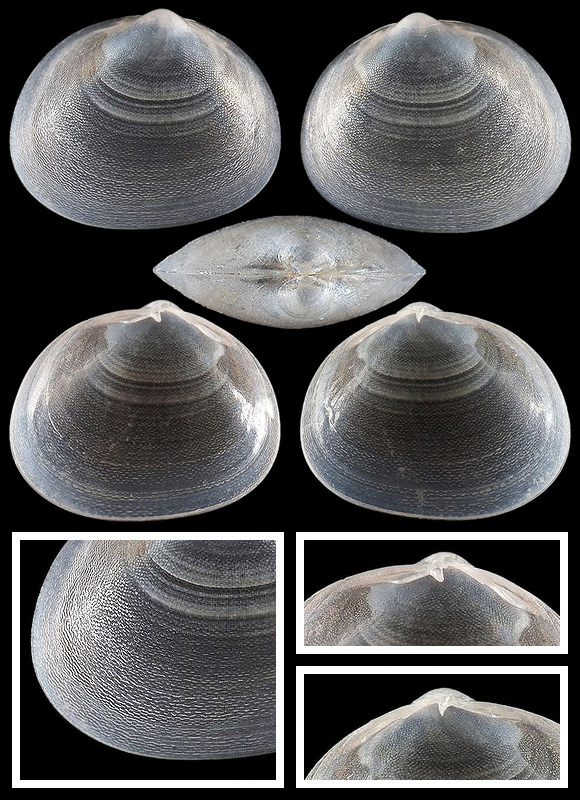
« Beaks small, somewhat prominent, placed a little nearer to the anterior than to the posterior side. Hinge-line gently curved, occupying nearly one-third of the circumference of the shell. […] Inside iridescent, striated lengthwise but irregularly; margin plain. Pallial and muscular scars usually indistinct, owing to the thin texture of the shell. » – Ibid.
60m deep, in the channel of Brač island, Split-Dalmatia Comitat, S. Croatia. 2,1mm. Original pictures provided by R. Stanić (HR) – (CC BY-NC-SA).
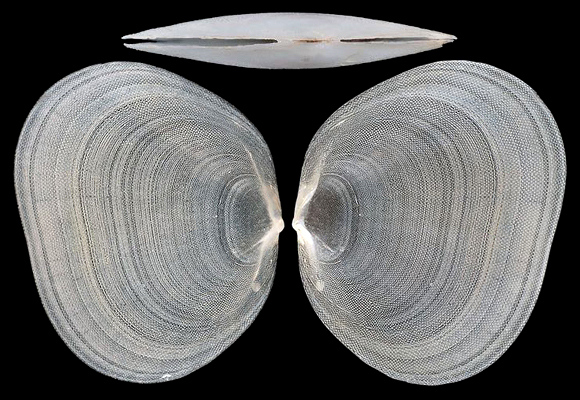
Original pictures provided by R. Stanić (HR).
– (CC BY-NC-SA) –
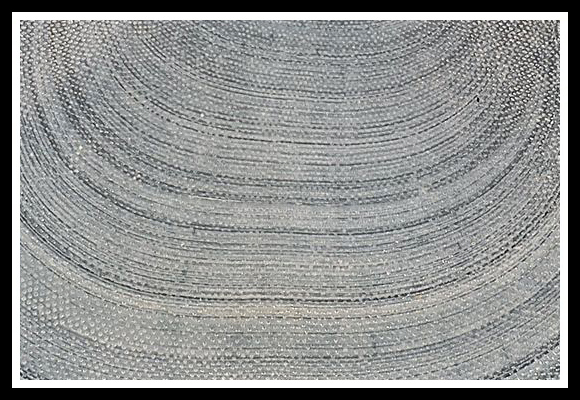
Original picture provided by R. Stanić (HR).
– (CC BY-NC-SA) –